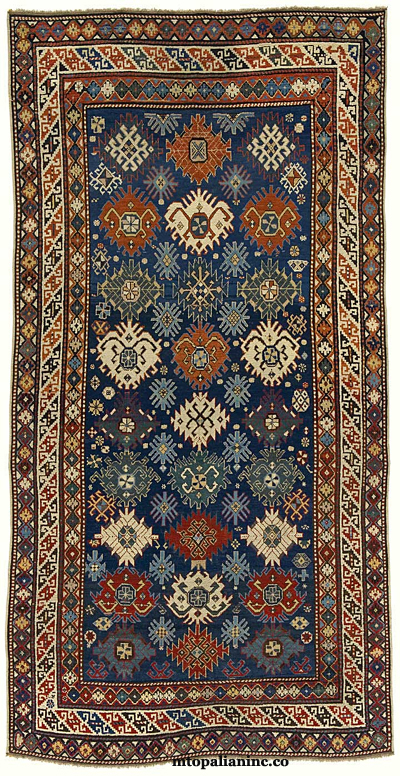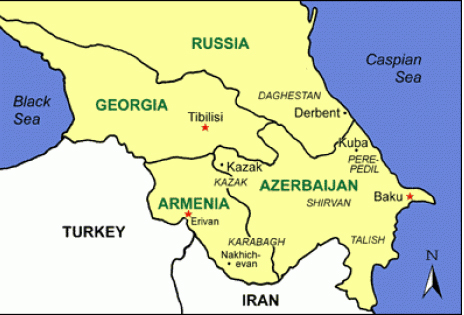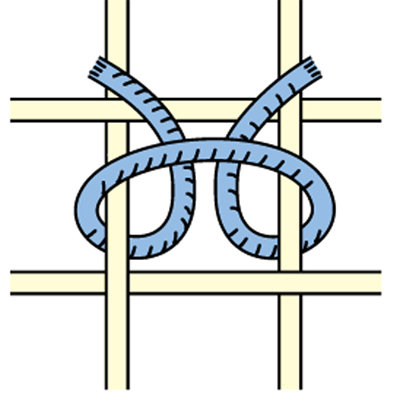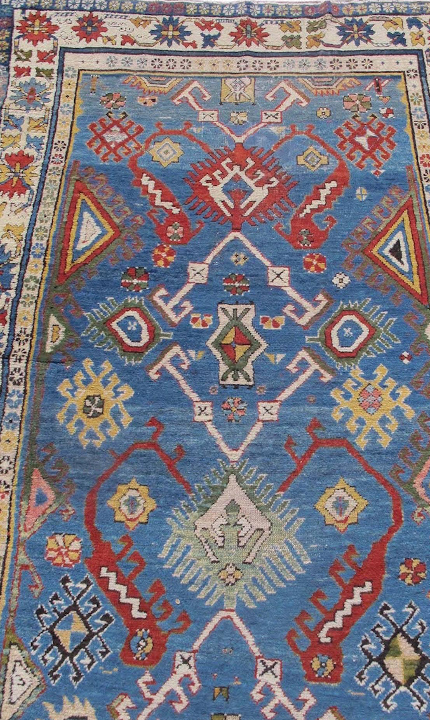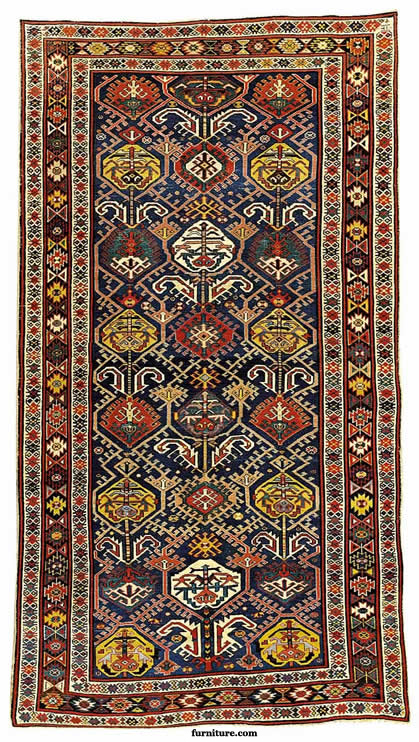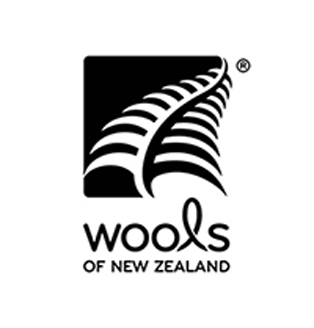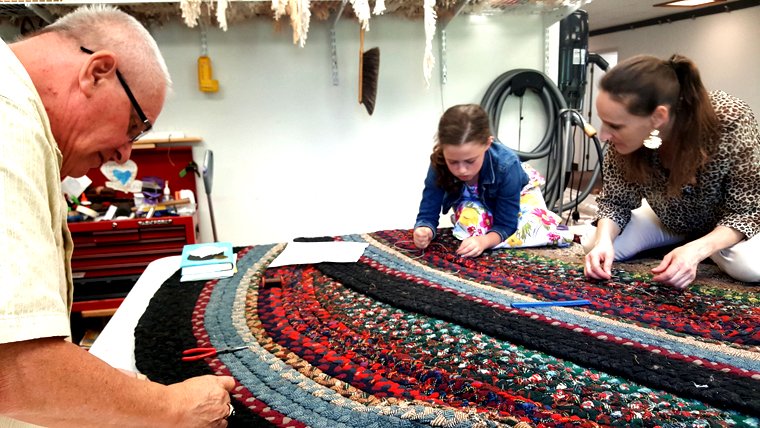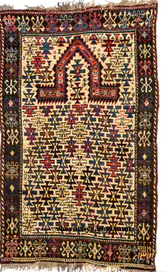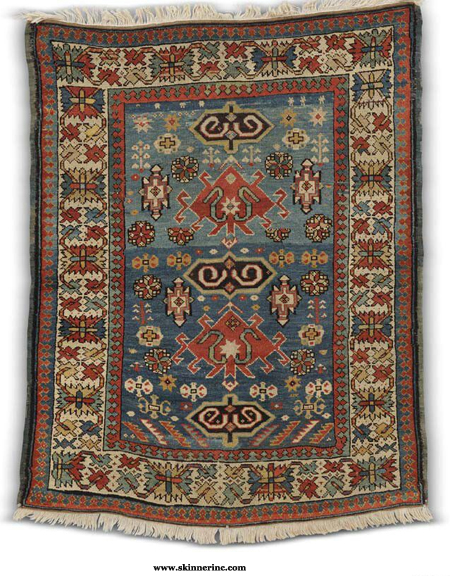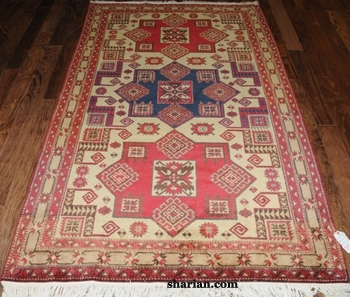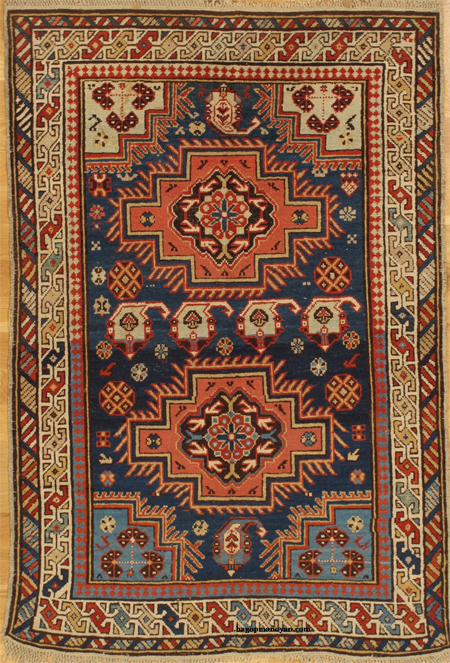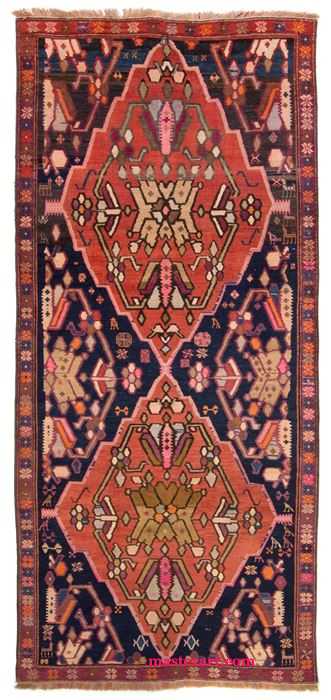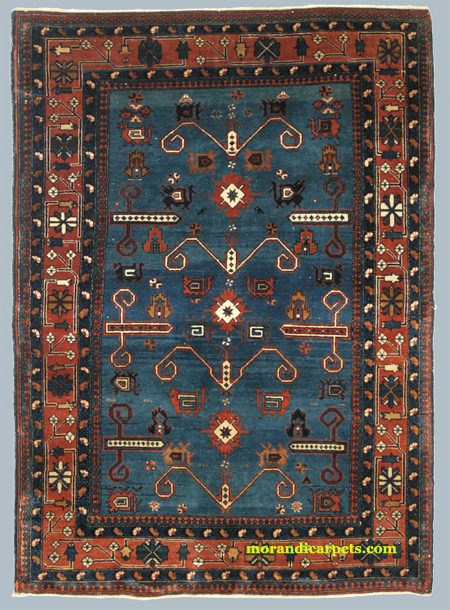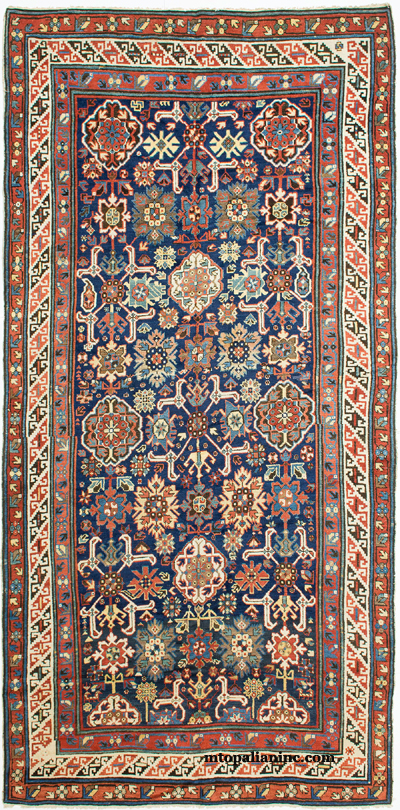DERBEND ORIENTAL RUGS
LOCATION
Derbend oriental rugs (Derbent, Derabend) are a type of Northern Caucasus rug made in and around the city of Derbend (Derbent) in the upper northeast corner of what is now the Russian Republic of Dagestan. The Republic is bordered on the East by the Caspian Sea and on the South by Azerbaijan.
The port of Derbent (as it is now called) is Russia's southernmost city and may very well be the oldest city in Russia as well. Its strategic location, occupying a narrow gateway between the Caspian Sea and the Caucasus Mountains, has for centuries made it vulnerable to many different conquerors and cultures. These have included the Persian, Arab, Mongol, Timurid, Shirvan, and Iranian kingdoms. The 1813 Treaty of Gulistan put the city into Russian hands.
When the Russians set up their administrative districts, they combined the mountainous area of what is now Dagestan with the flat area near the sea known as Derbend (Derbent) and called the entire area Dagestan. Today, although Russian is the official language, there are more than 30 commonly spoken local languages. Unfortunately, this region is a very heterogeneous, ethnically diverse area and can tend to be unstable.
WEAVING IN THE
CAUCASUS MOUNTAINS
Weaving in the Caucasus regions can be traced back as far as the Bronze age. Along with the Derbend oriental rugs, other notable rugs from the Northern Caucasus region include the Kuba and the Dagestan.
The Kazak, Karabagh, Gendje, Moghan, Talish, and Shirvan rugs were the major rugs from the Southern Caucasus region.
Antique rugs from these regions were often mislabeled as coming from major collecting points, rather than the actual area where they were woven, making positive identification difficult.
CONSTRUCTION OF
DERBEND ORIENTAL RUGS
Derbend oriental rugs share many of the general features of the Dagestan rugs but are typically much bolder and more crude. They also are larger in size, are coarser, have longer pile, fewer colors, and figures are not clearly defined.
FOUNDATION
The warp (up and down cords) and weft (side to side cords) are usually wool but the Turkoman influence on the Derbend area resulted in goat's hair being used for the warp in many of the rugs (rather than wool) giving the rugs a wilder appearance with a darker hue.
PILE
The pile is wool and, as mentioned above, it is usually longer than the other rugs in the area.
KNOT
The knot is the symmetrical or Turkish (Ghiordes) knot.
SIDES
The sides of the Derbend oriental rugs are overcast, some with several colors of yarn.
ENDS
The ends are typically finished with 4 rows of knots in the solid selvage where the fringes grow out. Often, however, the warp and weft are woven together in a broad web (also borrowed from their Turkoman neighbors).
DESIGN OF
DERBEND ORIENTAL RUGS
As mentioned above, the Derbend oriental rugs followed many of the general features of the Dagestan oriental rugs, such as the use of lattice patterns and geometric flowers.
There can be a main design with a large star (such as an elongated Yomud star) or some other geometrical figure which may be repeated 3 or 5 times diagonally on a field of blue or red. Figures on a blue field will often have predominantly red and saffron yellow colors. If the field is red, the figures will usually have blue and yellow colors.
The latch-hook motif can be an important part of the design.
Border stripes are clearly defined as in most of the other Caucasian rugs.
The Derbend oriental rugs have a natural sheen or luster. This is a characteristic of many of the Caucasian rugs. It may come from the yarn being rubbed under the coarse woolen socks of the weavers or it may be a result of the yarn being dyed without washing out the natural oil from the wool, making the yarns spread out into a cluster of fibers which reflect the light.
DERBEND ORIENTAL RUGS TODAY
The weavers of antique Caucasian rugs were able to stay relatively safely in their mountains during the many invasions and political changes that took place. They were able to take what they wanted from these invaders, but they continued to preserve their ancient customs and symbols as well, at least into the 20th century. That century brought with it cotton foundations, synthetic dyes, and more simplified patterns, significantly lowering the artistic appearance and value of the rugs.
Derbend oriental rugs were designed to be family rugs and were primarily used as floor coverings. That is why they were generally thicker and larger. Unfortunately, they did not tend to be artistically outstanding to begin with.
The 'institutionalization' of the rug making industry under Russian rule resulted in the production of mass-produced rugs for commercial use. Those women who continued to use the ancient ways wove rugs not intended for making money, but rather for private family functions such as weddings. It is still expected a family will supply woven products, such as rugs, for use as a dowry, though it does not seem as important to take as much pride in the final product as it used to be.
With the collapse of the Russian Empire in 1991, Western interest in weaving in the Caucasus was revived. Whether it will ever reach the heights it once did remains an open question.
As is the case with many of the other current rug weavings from the Caucasus region, there are rugs being woven in Pakistan with Caucasian designs that actually resemble the original rugs more closely than do any recent productions from the Caucasus mountains. These rugs use natural plant dyes and are very durable. They are often sold under the name of 'Kazak.'
"The Cleanest Clean You've Ever Seen."
by
ABC Oriental Rug & Carpet Cleaning Co.
130 Cecil Malone Drive Ithaca, NY 14850
607-272-1566
